Stop Worrying: 5 Brain Training Tools to Manage Stress
Optimize brain function and allow resetting negative habits with NeurOptimal® neurofeedback. Learn five effective brain training tips to manage...
Train your brain and sleep better without prescriptions or side effects! Learn how the NeurOptimal® Neurofeedback System help with sleep management.
Bad sleep is defined as not getting the sleep needed to perform optimally day-to-day and prevent illness. The trend over the last few decades is that people are getting worse and worse sleep. The average American today sleeps less than we have in all of recorded history.
In 1910, the average American got nine hours of sleep. Today, that is reduced to 6.8 hours on average. The number of people getting less than six hours has dramatically increased since 1985. Over 30% of people get less than six hours of sleep! It is a huge cost, not only to individual health, but also to the economy. It is estimated that bad sleep costs the nation roughly $444 billion dollars annually.
The first step is understanding why the amount and quality of sleep has degraded for people and that something can be done to manage sleep more effectively. Sleep hygiene practices work to gradually improve sleep. If you actively commit to an effective strategy and stick to it, it will improve your sleep.
An important tip for success is having realistic expectations of the timeframe for change. Learn why we have bad sleep, tips for improving your sleep, and how neurofeedback can be an effective tool for improving sleep hygiene.
One of the key areas of brain functioning is the ability to recognize exhaustion and to shift gears from being in go-mode to rest-mode. With today's busy lifestyle, people often fail to create the best conditions for the body to shift gears for a good night's sleep.
 At night, our minds frequently go into entertainment mode. We stimulate ourselves late into the night with cliff-hanger dramas on Netflix, work emails that come in at all hours, or news stories on social media that are worrisome or angering. All of these activities keep our minds in an active, daytime go-mode.
At night, our minds frequently go into entertainment mode. We stimulate ourselves late into the night with cliff-hanger dramas on Netflix, work emails that come in at all hours, or news stories on social media that are worrisome or angering. All of these activities keep our minds in an active, daytime go-mode.
Our brain state reflects these activities. By now, most people have heard that the light emitted by computer and phone screens are blue-toned colors that resemble daylight. These blue-tones inhibit the release of our own sleep drug, called melatonin, that our bodies naturally produce toward the end of the day.
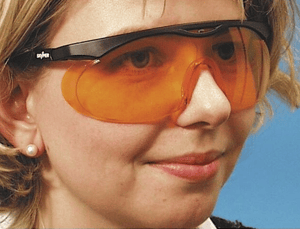 But wearing orange glasses is not sufficient to improve sleep. The emotional stimulation that these activities create keep the sympathetic, 'go-mode' nervous system in charge. The body produces cortisol, the stress hormone which keeps us alert, active, and emotionally engaged.
But wearing orange glasses is not sufficient to improve sleep. The emotional stimulation that these activities create keep the sympathetic, 'go-mode' nervous system in charge. The body produces cortisol, the stress hormone which keeps us alert, active, and emotionally engaged.
Another way to think about the role of cortisol is as the drug the body produces to keep us on the look-out for imminent danger. It acts as a billboard with flashing lights, reading: "Danger, danger, stay alert at all times!" We reinforce that message by seeking mental and emotional stimulation before bed.

While the jury is out about the exact amount of sleep adults need to stay healthy and prevent lifestyle related disease, studies point to seven to nine hours a night as optimal for health. This recommendation comes in part from studies that look at the longterm impact of too little sleep. Research is now consistently showing a negative connection between sleep and health, meaning if you sleep less than seven hours a night, you run the risk of increasing the likelihood of early-onset disease.
If you habitually sleep less than seven hours a night, you are putting your long-term health at risk. The specific illnesses that are related to less sleep are: obesity, diabetes, and heart disease. People who sleep less than six hours a night have higher body mass indexes (BMI), while those who sleep an average of eight hours have the lowest. Part of the reason seems to be that bodies that sleep less also have less of a hormone called leptin, which tells the brain when the stomach is full.

Think about how children are trained to go to sleep. Good sleep hygiene is not innate; it is learned. Parents teach their children how to wind down at the end of the day so they learn the stages that lead to sleep. When done correctly, the practice of gearing down during the evening ends with the child being ready for sleep when they crawl into bed. When this pattern is repeated night after night, the body learns the cues of when it is time to fall asleep.
The routine usually goes something like this:
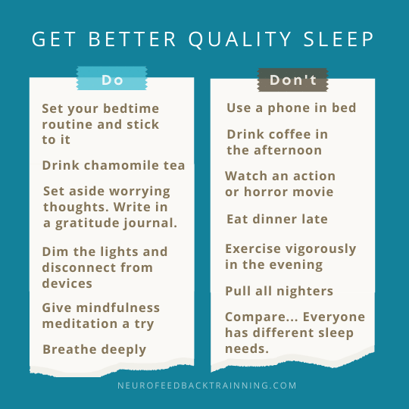 Dinner time a few hours before bed.
Dinner time a few hours before bed.

For people who want to create the best conditions for fixing their bad sleep, adding neurofeedback brain training to their sleep regimen is a good idea. Neurofeedback helps us reset habits.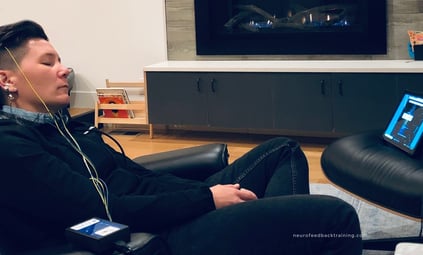
Regardless of why a client has decided to embark on brain training with neurofeedback, they often report at the end of their sessions that they are managing their sleep better. And for those individuals with bad sleep, they report it has turned a corner.
The specific neurofeedback system we use, called NeurOptimal®, has a unique design in that it addresses the overall functioning of the brain; it is not just targeting one area of concern like other neurofeedback systems. If you struggle with bad sleep, such as struggling to fall asleep or not feeling refreshed in the morning, these tendencies start shifting for the better.
The design of NeurOptimal® neurofeedback gives the entire brain a workout, akin to going to the gym and doing a routine that is a full-body training. After several sessions of NeurOptimal® neurofeedback, your brain starts to reset. It does so by applying what it is learning from the feedback about its habitual patterns. This feedback is based on the brain's electrical activity or brainwaves that are recorded by the neurofeedback system. Through the feedback, the trainee learns the essential formula for better habits and begins using the present to decide what to do next, instead of old habitual information. When alerted to pay closer attention to present moment needs, the brain realizes that the body is tired and safe at night, and therefore, that it is OK to switch out of alert go-mode into rest and repair mode.
Combining neurofeedback with a good sleep hygiene routine gives clients the boost to reset their bad sleep patterns.
Because neurofeedback is a relatively new brain training technology, clients love hearing other people's experiences with NeurOptimal®. Here are some specifically about how neurofeedback has benefited sleep hygiene for adults and children.
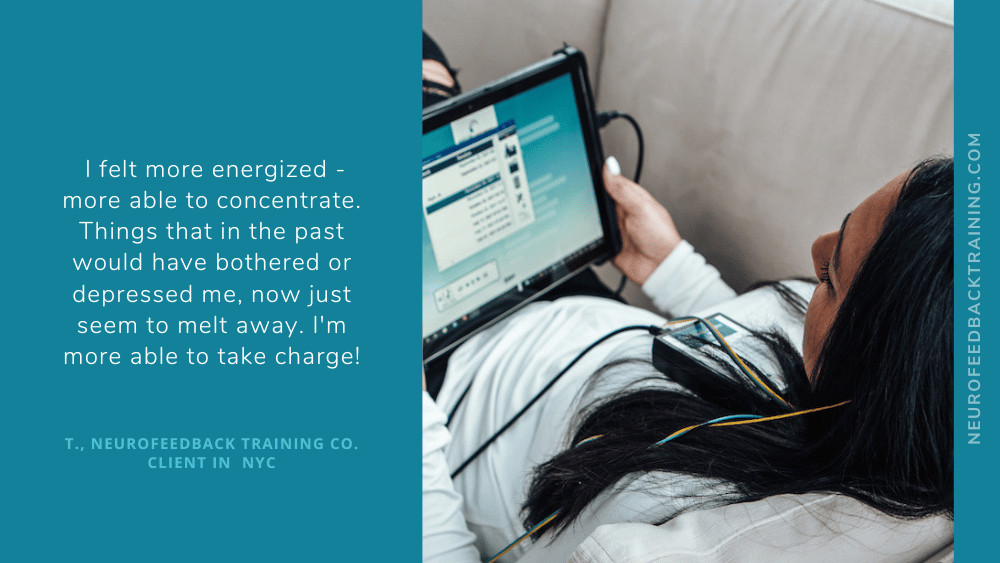
Here's a review from one of our rental clients who rented a home system for two months:

"Our entire family has been seeing improvements with the brain training. Both me and my husband are getting amazing sleep 💤 My daughter, who suffers from anxious thoughts and worry, has said that her pre bedtime fears went down from a 10 to a 5 the first time she used the machine. After doing a few sessions, she reported having 0 fears at bedtime. My 18 year old son, who has never been able to fall asleep until he was dead tired, can now put himself in a relaxed state and fall asleep in 15 minutes. It used to take him 2-3 hours to get to sleep before!"
Here's a client's NeurOptimal review who came in for sessions at our NY location: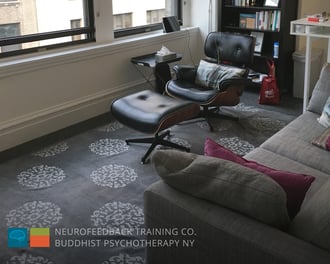
I have been averaging 5-5 1/2 hours of sleep for the past 30 plus years, regardless of when I go to sleep. Since starting Neurofeedback, (7 neurofeedback therapy in-person sessions), I have been sleeping later on weekends . . and enjoying a longer deeper sleep on weekdays. I now have to use an alarm clock to get up in the AM. It's still early in my "brain training", but I look forward to noticing what other positive effects I will have as a result. I understand that other participants have been able to increase their concentration and relieve anxiety. I would recommend reading the literature, and seeing if this brain training is for you.
Here's a success story from a couple who trained together for over two months and saw results in areas that were unexpected:
I was introduced to neurofeedback through the seminal book, The Body Keeps the Score, by Bessel van der Kolk. Thereafter, I did a lot of research and was thrilled to find the convenient option to rent a NeurOptimal (r) system to use at-home. Bonus - Neurofeedback Training' Co.'s rental option saved me hundreds of dollars vs. a different provider's on-site clinic fees in my city (I'm not in CA). I trained regularly for 2.5 months (over 50 sessions) and am 100% satisfied with my investment.
Here's a summary of my experience:
Some internal changes: As someone who has struggled my entire life as a non-morning person, I now wake up feeling substantially more refreshed, less groggy, and less overwhelmed (from a 9 to a 3 on a 10-point scale - incredible). I generally feel less worried/anxious in response to stress (8 to a 3), have a more balanced and hopeful mood and outlook (6 to a 3), and more energy and motivation (7 to a 3). Overall, life feels less effortful and more flow-like.
Interpersonal changes: My husband and I used the system together, and he reported substantial improvements in many areas, as well. It was amazing to experience the changes over time in how we related to each other more positively, patiently, and with more kindness. If you're in a partnership, I would highly recommend training together.
– E. in Portland, Oregon. Read Yelp Review
Here's another renter's review who trained for better sleep and noticed immediate results:
I just had my 3rd NO session this morning. After my 1st session yesterday I was able to get tired naturally and fall asleep around 9pm. Even though I woke up early (around 4am), I was able to get 7h of sleep (I haven’t been able to get more than 5h sleep without sleep aids in many years).
When I woke up early this morning, I checked my heart rate on my Apple Watch. It was abnormally high (usually my sleeping heart rate is in the 60s, but upon waking my HR was in the 90s). As you advised me, because of my inconsistent sleep patterns (waking up too early), I immediately went to do a NO session around 5am. I noticed my heart rate dropped to around 70s during the session.
It seemed like my body went into a frenzy that woke me up. But after I did the NO session this morning I am feeling very calm and notice I am more relaxed than usual. I can't wait to see how I feel after this month's rental.
Review Update: After 3 weeks of almost daily brain training this client ended up buying a system.
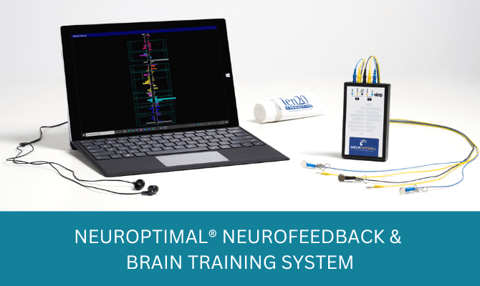
The NeurOptimal® Neurofeedback system we use at our centers is designed to focus on the brain, the hub of good sleep functioning. As mentioned above, the specific type of problem, be it physical, mental or emotional, does not need to be factored in for successful training.
The technology is safe to use because it does not force state change, rather, it is designed to create change through the brain's natural functioning. It accomplishes this by monitoring the brain's activity and sampling data 256 times per second, the speed at which the brain operates. When the software notes shifts, it interrupts the music that is played during a session. The interruption cues the brain's orienting response and alerts it to note what is changing. This process of allowing a reset over and over again during a session is training the brain to track the present moment better throughout the day and night. This tracking allows for constant resets of bad habits, such as irritability, feeling hopeless, lacking focus, or being wired at night. For more information, watch this helpful video – What is Neurofeedback with NeurOptimal®.
When fixing your bad sleep, the key point to remember is that you have the power to change it. Sleep hygiene is a practice that needs to be repeated for three months before you assess whether it is working or not.
Natalie Baker has over 25 years of experience as a licensed psychotherapist and has been a NeurOptimal® neurofeedback trainer since 2011. She is the founder of Neurofeedback Training Co., which offers in-person sessions and runs the largest nationwide home rental program for NeurOptimal systems. Natalie also teaches meditation and Buddhist psychology and specializes in working with anxiety, stress, ADHD, and trauma.
Optimize brain function and allow resetting negative habits with NeurOptimal® neurofeedback. Learn five effective brain training tips to manage...
Discover how neurofeedback therapy at home improves sleep quality by calming the nervous system, balancing circadian rhythms, and supporting deep,...
How Does Neurofeedback Work? Discover the Science Behind It. Understand the science behind neurofeedback and how it can help improve brain function.
Be the first to know about new blogs